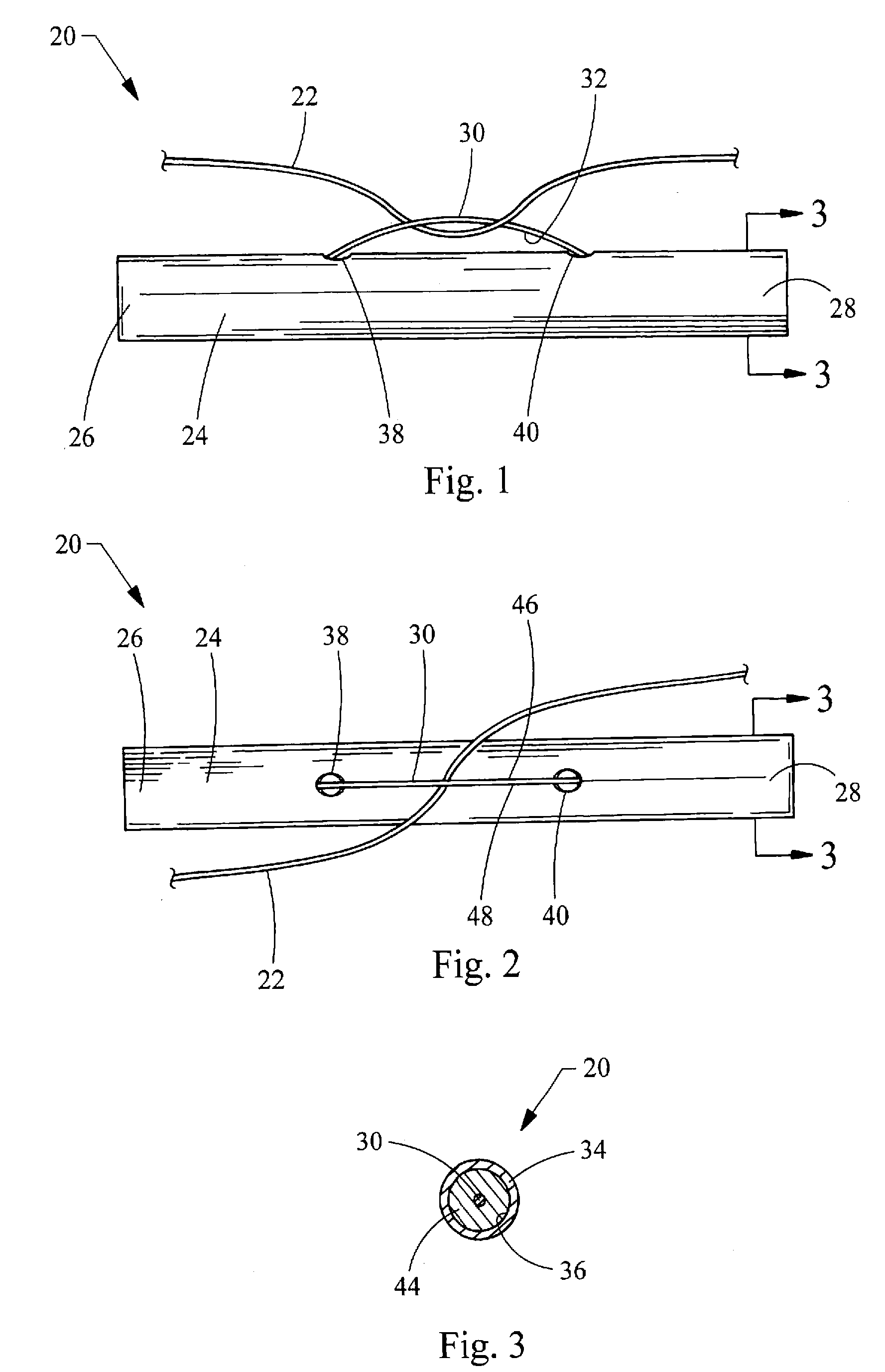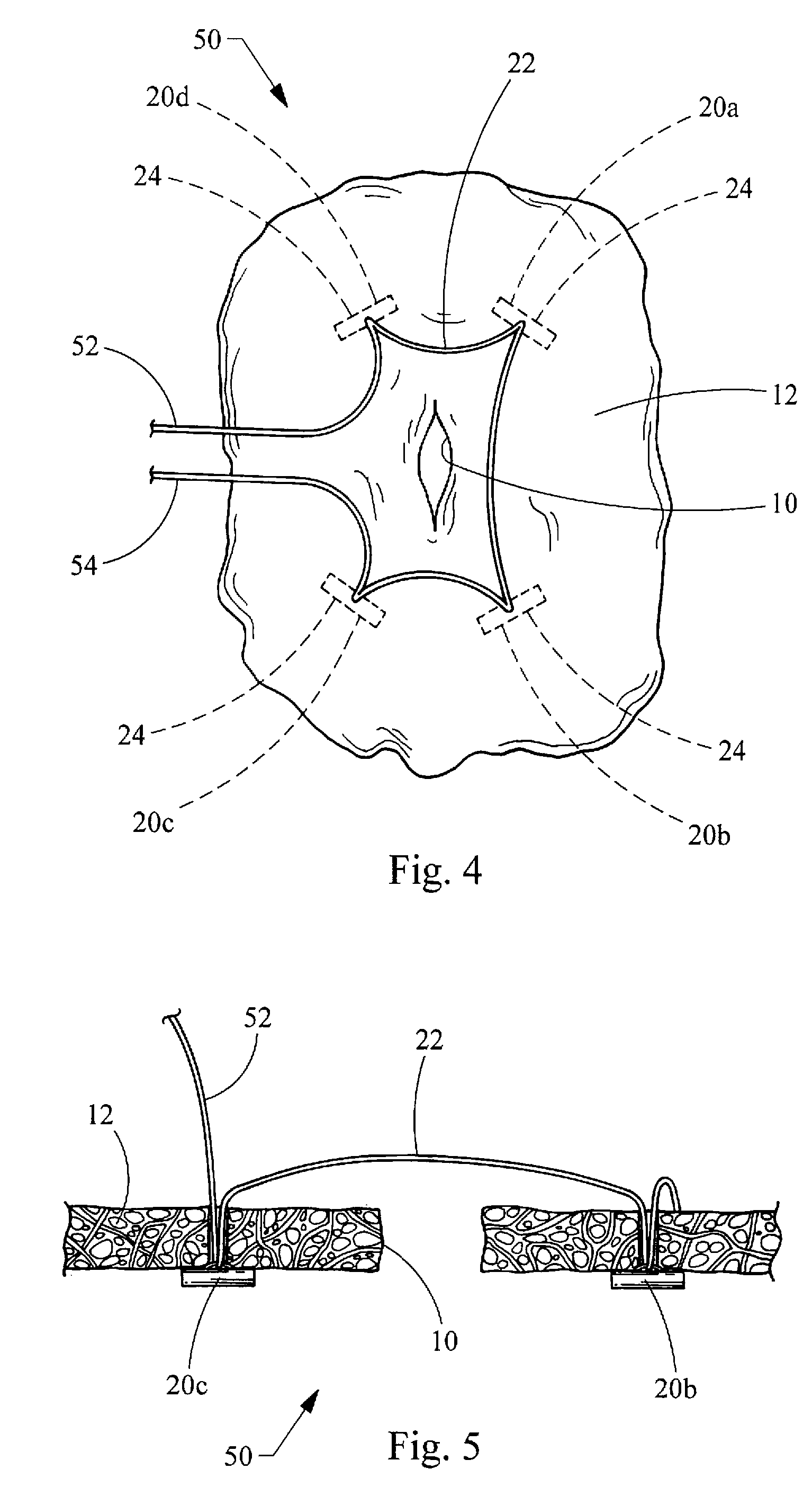Visceral anchors for purse-string closure of perforations
a technology of perforation and visceral anchors, which is applied in the field of visceral anchors, can solve the problems of difficult to properly tension each individual suture, unwanted and sometimes deadly infection, and not without their drawbacks, and achieve the effect of increasing versatility and controlling the closure of perforations
- Summary
- Abstract
- Description
- Claims
- Application Information
AI Technical Summary
Benefits of technology
Problems solved by technology
Method used
Image
Examples
Embodiment Construction
[0027]Turning now to the figures, FIGS. 1-3 depict a visceral anchor 20 constructed in accordance with the teachings of the present invention. The anchor 20 is utilized to connect a suture 22 to tissue for closing a perforation 10 in a bodily wall 12 (FIGS. 4 and 5). The anchor 20 generally includes a crossbar 24 having opposing ends 26 and 28. The crossbar 24 is preferably elongated, but may take any form suitable for connecting the suture 22 to the bodily wall 12. A wire 30 connected to the crossbar 24 to form a loop defining a passageway 32 between the wire 30 and crossbar 24. As best seen in FIG. 3, the crossbar 24 is constructed of a cannula having a tubular wall 34 defining a lumen 36. First and second apertures 38, 40 are formed in the tubular wall 34, and the wire 30 passes through the apertures 38, 40. The ends of wire 30 are secured within the lumen 36 of the cannula by welds 44. It will be recognized by those skilled in the art that the wire 30 may be secured to the cross...
PUM
 Login to View More
Login to View More Abstract
Description
Claims
Application Information
 Login to View More
Login to View More - R&D
- Intellectual Property
- Life Sciences
- Materials
- Tech Scout
- Unparalleled Data Quality
- Higher Quality Content
- 60% Fewer Hallucinations
Browse by: Latest US Patents, China's latest patents, Technical Efficacy Thesaurus, Application Domain, Technology Topic, Popular Technical Reports.
© 2025 PatSnap. All rights reserved.Legal|Privacy policy|Modern Slavery Act Transparency Statement|Sitemap|About US| Contact US: help@patsnap.com



